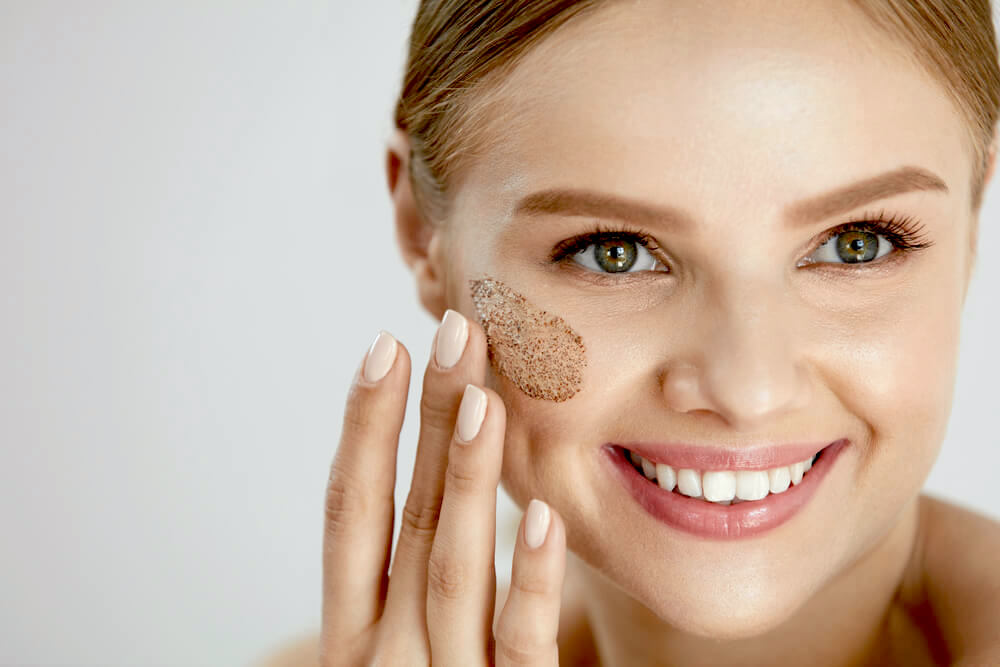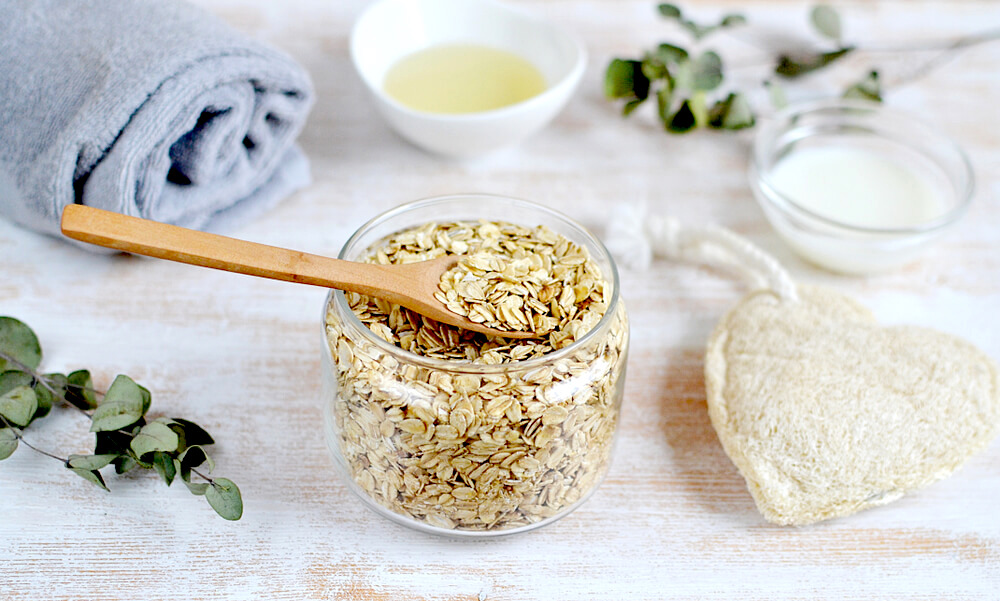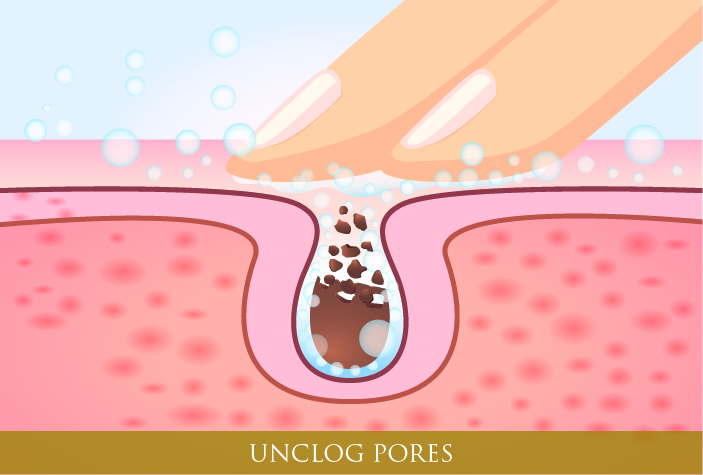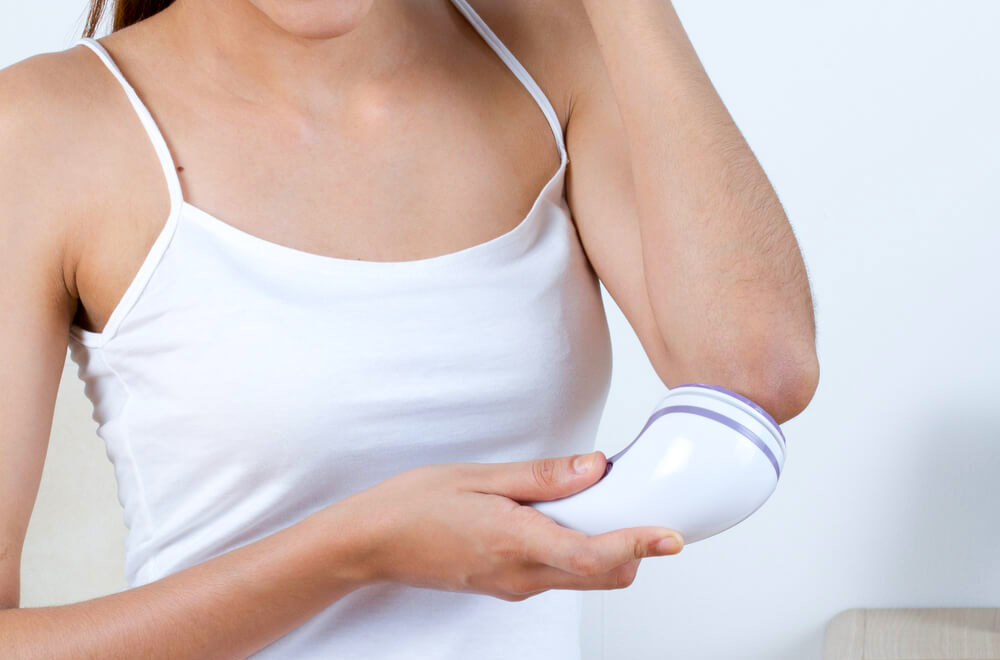Comparing Different Types of Exfoliation

When it comes to healthy skin, exfoliation is absolutely essential.
Here are just a few of the benefits that you will experience from regular exfoliation:
- Removes dead skin cells
- Clears pores, and therefore makes them appear smaller
- Speeds up the cell renewal process
- Enables other skin care products to better penetrate the skin’s layers
- Reduces discoloration
- Minimizes wrinkles and fine lines
- Boosts circulation
It is important to recognize that there are a few different types of exfoliation, and the method that you opt for should be one that works well with your skin type, enhancing your skin’s health rather than causing any damage.
Mechanical/Physical Exfoliation
Mechanical exfoliation tends to be the most common type of exfoliation, and usually refers to a scrub.
These scrubs are easily available from a wide range of stores, and feature abrasive ingredients, such as sugar, salt, rice and nut shells.
They are designed to be rubbed onto the skin, with the abrasiveness of the ingredients scrubbing away any dead skin cells and dirt.
However, the fact that many of the common ingredients used in scrubs are so abrasive is not necessarily a good thing…
In fact, ingredients that are too abrasive will end up scratching and tearing at the skin, resulting in redness, irritation and more. These ingredients include nut shells, fruit pits and seeds, because even when they are ground down finely, they still contain edges that are quite sharp. Micro beads are another common exfoliant to avoid, as they have been linked to a severely detrimental effect on the environment.
On the other hand, oats and grains make great physical exfoliants, as they are gentle yet effective, and also contain properties that help to calm and soothe the skin.

If you do end up opting for a scrub, make sure that, no matter how gentle the ingredients may be, you do not rub this too harshly against your skin. You should also try to keep it away from your eye area, as the skin here is extremely thin and delicate, and most facial scrubs will be too harsh.
Of course, scrubs are not the only form of mechanical exfoliation…
This type of exfoliation can also refer to using an abrasive tool to scrub at the skin. This could be anything from a dry brush to a loofah, but, again, you need to make sure that you are not causing more harm than good.
While there is no denying that a scrub or an abrasive tool can be so satisfying to use, as it feels as though you are physically removing all of the dirt from your skin, you do need to be aware of the fact that they will only really clear the surface of your skin, and will not have a deeper effect.
Chemical Exfoliation
Many people steer clear of chemical exfoliation simply due to its name, believing that they will end up burning and damaging their skin.
However, this is not at all true…
In fact, chemical exfoliation can be better than manual exfoliation for a number of reasons, but, before going into that, it is important to understand exactly what chemical exfoliation is.
There are actually two main types of chemicals that are used for chemical exfoliation:
- Alpha Hydroxy Acids – known as AHAs, these include ingredients such as glycolic acid and lactic acid
- Beta Hydroxy Acids – known as BHAs, the most common type is salicylic acid
So, what is the difference between the two?
One of the main differences is the fact that AHAs are water soluble, while BHAs are oil soluble. This means that AHAs are great for exfoliating the surface of the skin, while BHAs are better if you want to clear out excess oil from within your pores too.
You may be wondering…
Can’t I use both?
The answer is yes, but do not do this at the same time, as it will likely be too much for your skin to handle. Try alternating which one you use each time you exfoliate instead.
Both AHAs and BHAs actually come in a number of different forms, from cleansers to serums to peels. When choosing between all of the options available, make sure that you opt for one that enables the ingredients to remain on your skin for a while. Although a cleanser may be the easiest product to use, this is washed off so quickly, so the chemicals will not have enough time on your skin to work their magic.
Studies also show that both AHAs and BHAs can make the skin more sensitive to the sun, so they are best off being used at night. If you do use them in the daytime, make sure that you pay extra attention to sun protection.
What about chemical peels?

These basically use the same ingredients that a standard chemical exfoliator would, but contain them in much higher concentrations. Since they are stronger, they do require some recovery time, and you will likely need to use specialized products before and after the peel.
Enzymatic Exfoliation
Many refer to enzymatic exfoliation as a type of chemical exfoliation, as there is still a chemical reaction that takes place. However, the ingredients used in enzymatic exfoliation are quite different to those used in the other forms of chemical exfoliation mentioned above.
These are the three most common enzymes used in enzymatic exfoliation products:
- Bromelain – also known as Ananus Cosmosus Fruit Extract, bromelain comes from pineapples
- Cacain – known as Carica Papaya Fruit Extract, cacain comes from papayas
- Pumpkin Enzyme – officially known as Cucurbita Pepo Enzyme, this one comes from, as you have probably guessed, pumpkins
Each of these enzymes are proteolytic, which means that they are able to break down proteins. Since the glue-like substance that holds dead skin cells to the surface of the skin is actually keratin protein, enzymes are able to work extremely effectively against these.
One benefit of using enzymatic exfoliation rather than other forms of chemical exfoliation is that the enzymes are much gentler on the skin, meaning that even those who have sensitive skin can enjoy similar effects to what AHAs and BHAs would have resulted in. They are also much gentler than mechanical exfoliation methods, and contain anti-inflammatory properties.
Sound too good to be true?
In a way, it almost is…
There is one big downside to enzymatic exfoliation products, and this is the fact that it is so difficult to keep enzymes stable. They are actually extremely temperamental, and are affected by a number of different factors, from temperature to light to pH.
They need to be stored in a cool and dark place, and this not only applies to your home, but also to the shop that is selling it, as well as the warehouse that used to house it.
As you can imagine, having control over how a product is stored all the way through the chain is next to impossible. This means that the majority of enzymatic exfoliants out there are likely to be sub-par in quality, and may not have much of an effect on your skin.
Fortunately, this is likely to all change soon, as there is so much research going on into how to make enzymes more stable when it comes to skin care product formulas.
Retinol
A derivative of vitamin A, retinol is famous for being one of the most potent anti-aging ingredients out there. It comes with many benefits, but one of these is the way in which the skin is able to convert it to retinoic acid, which stimulates the body’s natural exfoliation process.
While retinol may not technically be a method of exfoliating, this is an ingredient that still results in your skin being exfoliated. This means that, if you are regularly using a retinol-based product, you would be best off refraining from other forms of exfoliation, unless you feel as though your skin really needs it.
Choosing the Best Method of Exfoliation for Your Skin Type
The best way to choose an exfoliation type is by first determining your skin type, as this means that you can choose the method that will be most beneficial to the specific needs that your skin has.
If you have oily, acne-prone skin:
- Avoid mechanical exfoliation, as these can often spread acne-causing bacteria all over your face
- BHAs will help to clear excess oil from your pores
- Salicylic acid in particular is great for treating acne, fading scars and regulating oil production
- Do not exfoliate more than once a week, as exfoliating too often will only stimulate your oil glands to produce more sebum

BHAs can help unclog pores.
If you have dry skin:
- You need to use ingredients that will exfoliate and hydrate your skin at the same time
- Look for products that contain nourishing and soothing ingredients, such as jojoba
- AHAs are great for boosting cellular turnover
If you have combination skin:
- Chemical exfoliants, especially glycolic and salicylic acid, will help to treat both dry and oily skin
- You could try using different chemical exfoliants on different parts of your face
If you have sensitive skin:
- Stay away from scrubs, as these will only irritate and damage your skin
- Avoid any synthetic acids, as these are too harsh for your skin
- Enzymatic exfoliation is a great option if you can find suitable products, otherwise opt for a gentle chemical exfoliant, such as lactic acid
If you are lucky enough to have normal skin:
- Feel free to experiment with all of the different exfoliation types
Do not forget that the skin on different parts of your body varies in thickness, so you will likely need to use different types of exfoliation for different areas of your body. For example, your elbows and knees may require a physical scrub or brush three times a week, while the skin on your face may only require a chemical exfoliant once a week.

Over-Exfoliation
No matter which method of exfoliation you choose, over-exfoliation is always a danger.
How do you know if you have over-exfoliated your skin?
A few of the symptoms include:
- Redness
- Irritation
- Flaking skin
- Dry patches
- Stinging or burning sensations
- Tightness
Many people do not immediately equate these symptoms with over-exfoliation, meaning that they continue to exfoliate at the same rate, making the problem even worse.
So, how often should you be exfoliating?
This all depends on the method of exfoliation you choose…
With chemical exfoliants, this varies greatly depending on the concentration of active ingredients, so you need to check the recommendations for the specific product that you are using. However, the majority of chemical exfoliants should not be used more than once or twice a week.
With physical scrubs, you have more control over how gently you use them, so, if you are quite gentle with your skin, you may be able to tolerate using a scrub twice or thrice a week.
After Exfoliating
Since exfoliation clears away the top layer of dead skin cells from the surface of your skin, it leaves your skin much more vulnerable to the environment around you.
What can you do about this?
The most important step that you can take is to moisturize your skin immediately after exfoliating, while your skin is still damp. This enables the excess water, as well as the moisturizer, to form its own protective barrier over the surface of your skin.
If you continue to exfoliate without moisturizing your skin afterwards…
You will likely begin to experience dryness, as well as some of the other symptoms of over-exfoliation that have been mentioned above.
Cultures all over the world, many centuries ago, understood the importance of exfoliation, and this is something that has been carried forward to today. Exfoliating on a regular basis will bring significant improvements to the health of your skin, so long as you choose the method of exfoliation that is best for your skin’s individual needs.

